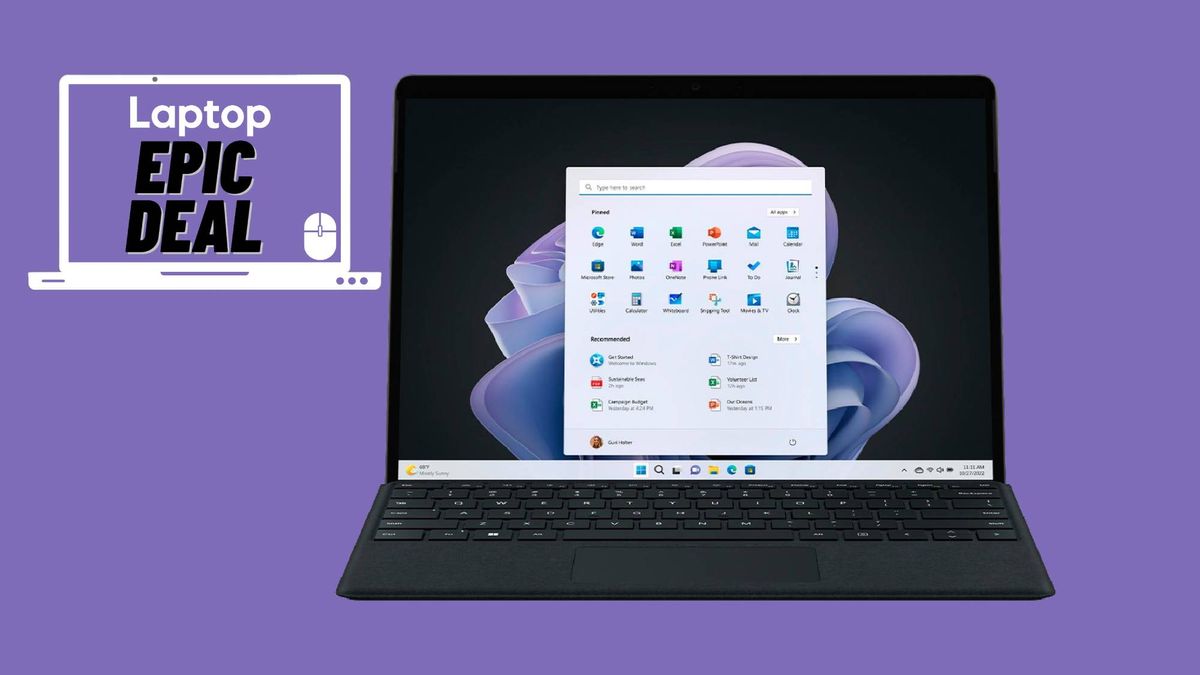

PHOTO:
unsplash
Washington Irving once wrote, “There is a certain relief in change, even though it is from bad to worse! As I have found in traveling in a stagecoach, that it is often a comfort to shift one’s position and be bruised in a new place.”
Even before 2020, we could all agree that change is a constant in the modern workplace. But now more than ever before, organizational theorist Russell Ackoff’s suggestion holds true: “The one certainty of change is that it always been accelerating.”
CIO Martin Davis agreed with Ackoff when he said, “change is on an exponential curve and it’s going to continue increasing, unlikely to plateau anytime soon, if ever.” Hurwitz Analyst Dan Kirsch added, “it just feels like the pace of change is faster than ever, but all of the sudden the iPhone is a decade old, and the internet is 40 years old. Forty years before the internet, many homes in the US did not have electricity.”
CIOs Need to Become ‘Change Masters’
Harvard Business School professor Rosabeth Kanter introduced the idea of change masters in her 1983 article, “The Change Masters: Innovations for Productivity in the American Corporation.” Kanter argued change masters could radically improve corporations, but needed to be identified and encouraged in order to flourish and innovate. She defined the term as: “change masters within a business that radically improve it, rather than leaving and starting afresh somewhere else.”
The concept of change masters rang true for some. Former CIO Wayne Sadin said, “change masters should have been in every CIO job description ever written! What needs changing is the CIO’s sphere of influence, from tech change to business redefinition.” CIO David Seidl, however, had a more critical view of CIOs’ past orientations. In his view, “IT has been in the past simple keepers of stability and order. If we are doing it right, our organizations should see us as examples of change agents today and a place to turn to for change expertise. However, constant change is hard. Knowing your individual, group, and organizational appetite for change and how much you can push through before everyone is exhausted is important. It’s a muscle to work out — something that you can and should get better at it.”
So what would it take for a CIO to become a change master? According to CIO Paige Francis, “CIOs need to be continual learners and deeply understand all their business’ nuances so their work results in value. I would add for this reason, CIOs should be strategy masters and confidence builders.” This means CIOs should focus less on technology, a point CIO Martin Davis made: “I have believed for years that being a CIO is more about change management then it is about technology. However, the type of change is changing. IT is less about project related change and more and more about whole organization change.” For former CIO Tim McBreen this means, “CIOs need to be masters at arranging, facilitating others within the organization from leadership team down. In addition, they need to be masters on taking on change from idea to implementation including the technology and business elements of driving business value.”
Related Article: CIOs Reimagine the Workplace of the Not-So-Far-Off Future
What Skills Should CIOs Nurture in Change Leaders?
CIOs identified the following as some of the top skills change leaders need: emotional intelligence, listening and agile planning. Beyond this, change leaders should be able to embrace criticism, be great organizational communicators, have curiosity, creativity and empathy, understand change psychology, be students of their organization and practice critical thinking.
In terms of building a change team, Sadin said, “hire the basic skills and traits and then train the rest.” Where these skills do not exist, McBreen recommended the following: “CIOs need to nurture listening and critical thinking from a function, process and technology perspective.” Beyond this, Davis said CIOs should nurture “emotional intelligence and the ability to empathize with everyone in the organization. These are critical. You can teach a lot of the skills, but only if people have the right attitude and approach as a foundation.” At the same time, Francis says it is important for “CIOs keep communicating and don’t roll back! Push! And stay present, visible.”
Easing the Impact of Change
Several years ago, I met with the then CIO of the American Cancer Society. At the time, he was rolling out changes that would have massive impacts on cancer patients and care providers. Everyone from top to bottom agreed with the need for the changes. Yet the CIO said the change in the end would impact someone’s day-to-day life. Given this, Mc Breen said, “CIOs have to have a plan geared toward each key leader, influencer and detractor. CIO should assign themselves critical people and then pair up others in organization with rest of key people.” In this process Seidl said, “IT strategy leader Katie Rose taught me the value of having a backstage. This is someone who can listen to you when you need to talk through things, so you can have more emotional strength left to be vulnerable. Supportive friends and co-workers make things possible! Find the vulnerable, find the folks who are impacted, and find those who may be forgotten. Seek them out, give them a voice, find ways for them to engage safely. Know you will miss some, so leave your door open. Listen a lot. Flex where you can. Explain when you can’t.”
The above is great advice for every organizational leader — not just the CIO.
Sadin agreed with Seidl, saying “empathy is a core trait for managing change. Communicating what’s in it for me to all affected groups is a vital skill.” Saidin added a note of caution for CIOs: “Sometimes we can overlook the impact of changes to IT itself. We love changing others but hate personal changes as much as anyone!” Of course it’s not possible for CIOs to mitigate every bump along the way. Davis suggested setting more realistic goals through clear communications. “CIOs cannot fully ease the impact of change. But that’s not why people resist …. most resistance is caused by a lack of communication, which leads people to fear the worst. CIOs and other change leaders need to start with what’s in it for me and build good communications.” Without question, being upfront and honest is important. Kirsch shared a common example facing businesses today where those skills are needed: “Where RPA and automation are being brought into a business, what does that mean for employees? Also, be upfront about how employees can remain valuable to the business — soft skills and domain expertise remain important.”
Related Article: Navigating AI: The Changing Role of the CIO
Enabling Change Leaders to ‘See Around Corners’
Rita McGrath wrote a book on the importance for leaders to see around corners. CIOs have a key role to play here. “CIOs need to act as a catalyst. They need to be the change expert coaching other executives about approaches and ways to avoid problems,” said Davis. But to do this effectively, Dan Kirsch said, “change leaders need to understand different parts of the business. They need to understand how change will impact technology, sales, marketing, client success and partners. It comes down to empathy.”
Proactive listening plays a big part here. “IT organizations need to take on a partner view, which means we should be part of the ebb and flow of other departments and divisions. We need to listen so we can hear when things don’t sound right. We need to make sure other organizations, partners, and colleagues are comfortable telling us what is going well and what isn’t working. We need to learn to ask for feedback, even when things are quiet,” said Seidl. To succeed at this Francis said, “CIOs need to lead by example and offer to take the tech heat if there are hiccups. Fear is rooted in failure. CIOs should take that off the plate. Sometimes other leaders need a safety net. Fortunately, CIOs are used to risk.” I learned this personally when an expected product success failed on further evaluation, but eventually led to a huge market success. There is value in being able to react more slowly.
At the same time, Sadin is realistic that most changes are driven from outside the IT organization and the main change impact also hits outside IT. It is the CIO’s job is to see around tech corners to help C-suite predict changes and prepare the organization for the need and for the impact. CIO must partner with all executives to see around more types of corners! For this to work, McGrath advises “lots and lots of listening and getting out to the ‘edges.’ It also helps to make it clear you are after more than just good news!”
Does Digital Transformation Change the CIO Model?
The old stereotypes of CIOs sitting in the back office fiddling with technology no longer apply. As Davis said, “the CIO as back-office improver went away quite a while ago. A good CIO is a business leader that understands technology.” Seidl added, “the role has changed.” While Francis agrees, she advised CIOs remember to keep the basics in order: “sometimes without refining the back office, you can’t transform sustainable digital. Lead with the sexy stuff but make sure your house is in order behind the scenes.” Nevertheless, McBreen said, too many companies still “don’t want a business partner, they want a service coordinator.”
Hopefully, these type of CIOs roles are few and far between. Clearly, today’s CIO needs to be fluent with culture, markets, products, CX and EX and also be comfortable with boards of directors, investors, customers, frontline teams to a much bigger extent than before. I’ll give Kirsch the final word on this point: “The role of the CIO has evolved from being a cost center that reports to the CFO to being a partner in change. The CIO needs to be a business leader that understands technology, not a tech leader.”
CIOs’ New Role Crystallizes
Today’s CIOs must be comfortable responding to change and not just be about changing positions within a company’s legacy stagecoaches. The future requires CIOs that can enable change leaders and quickly eliminate legacy technology issues such as technology debt to make an agile, future-focused organization possible. Today’s CIO needs to be a change master in every sense of the word.
Myles Suer, according to LeadTail, is the No. 1 leading influencer of CIOs. Myles is director of solutions marketing at Alation and he’s also the facilitator for the #CIOChat.






